Resources & Education
Adoption-related resources and information
Children Learn What They Live
If you want your child to value relationships
and learn how to create and sustain meaningful, loving human connections — you
are their most important teacher. Allison Davis Maxon, LMFT, is a clinician, educator and
advocate specializing in attachment, trauma and adoption/permanency. She is passionate about creating systems of care that are
strength-based and trauma-informed.
Developing Emotional Attachments In Adopted Children
It is helpful for adoptive families to have a good understanding of the difference between healthy secure attachments and insecure attachments. This article will help you understand more about developing emotional attachments in adopted children.
Institute of Child Psychology
It is helpful for adoptive families to have a good understanding of the difference between healthy secure attachments and insecure attachments. ICP was founded to educate parents and professionals on issues pertaining to children’s mental health, and to promote the psychological and emotional well-being of children and adolescents.
Nurturing Attachment
It is helpful for adoptive families to have a good understanding of the difference between healthy secure attachments and insecure attachments. A child’s relationship with a consistent, caring adult in the early years is associated later in life with better academic grades, healthier behaviors, more positive peer interactions, and an increased ability to cope with stress.
About Attachment
In the early stages of adoption, parents must be extremely sensitive and responsive to their child’s needs, both the more obvious physical needs and the sometimes confusing and subtle emotional needs.Please visit the recommended links to gain a better understanding of attachment and bonding in adoptive families.
Meet the Lohses
The terms ethnicity, race and culture are often used interchangeably. This can be confusing. It is helpful to understand that transracial adoption is a term that has been used to describe the placement of a child who is of one race or ethnic group with adoptive parents of another race or ethnic group. This results in a combining of cultures. The Evermore Centre expresses gratitude to the Lohse Familiy for their willingness to share. all three perspectives in a transracial adoption.
Transracial Adoption
An academic read that provides a wealth of information on Transracial adopiton in Canada. The present statement looks at how children come to understand their racial identity, reviews the outcomes of transracial adoption and provides guidance on how best to support children and their families in transracial adoptions.
Supporting Transracial and Transcultural Adoptive Families
Parents who have adopted a child of another race, culture, or ethnic group must commit to deepening their own understanding of different races, cultures, and ethnicities in order to support their child or youth’s exploration of their own identity. This section offers resources for professionals working with parents to help them understand and care for their adopted children from racially and culturally diverse backgrounds.s.
Adoption by Family Type: Racially and Culturally Diverse Families
For transracial families, the integration of more than one culture will be required to recognize the diversity of other family membersThe terms ethnicity, race and culture are often used interchangeably. This can be confusing. It is helpful to understand that transracial adoption is a term that has been used to describe the placement of a child who is of one race or ethnic group with adoptive parents of another race or ethnic group. This results in a combining of cultures. Culture is typically an important part of a community or family identity. Culture involves a shared system of learned values, beliefs and rules of conduct. Ethnic, racial, and cultural diversity is common in families.
Children and Youth First Principles
In response to a recommendation of our office, the Government of Saskatchewan adopted these principles in February 2009 as part of its plan to strengthen the province’s child welfare system. It is hoped that the Government of Saskatchewan will fulfill its commitment to our youngest citizens by using the Principles as a mandatory guide for child-serving ministries to examine current and new legislation, policy, practices and programming
The Convention on Rights of a Child Infographic
Every child in Canada and around the world from birth to 18 has rights. Rights are what children should have or be able to do to survive, thrive and meet full potential. This resource/poster will help you understand.
The Convention on Rights of a Child
Rights are what children should have or be able to do to survive, thrive and meet full potential. All rights are equally important and are connected to each other.The rights of children need to be at the forefront, especially when decisions are being made for them. This is especially true in adoption. This is a simple navigational tool guides the user through the Convention and its supporting documentation.
